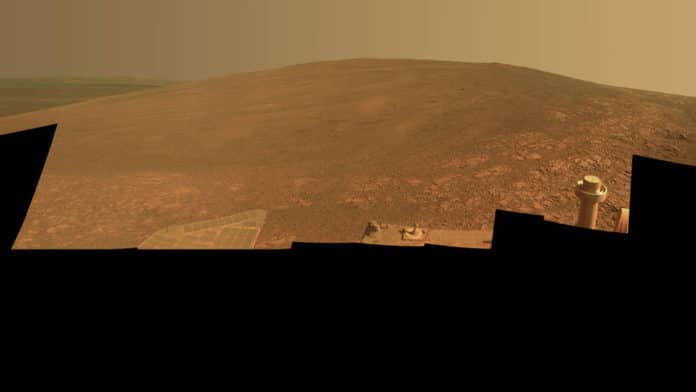Space radiation, especially on long-term missions to Mars, is a significant risk for the health of astronauts. Unlike Earth, Mars doesn’t have an intrinsic global magnetic field. Plus, its atmosphere is too thin to shield against radiation effectively.
It is essential to understand the Martian radiation environment in preparation for future human habitats on Mars. Mars does not have an intrinsic magnetic field, and Galactic cosmic ray (GCR) particles may directly propagate through and interact with its atmosphere before reaching the surface and subsurface of Mars.
In a new study, scientists modeled the Martian radiation environment induced by omnipresent cosmic rays in Mars’s atmosphere and terrain. They used the state-of-the-art modeling tool–the Atmospheric Radiation Interaction Simulator (AtRIS), and radiation data collected by NASA’s Curiosity rover.
They simulated GCR exposure on the planet’s surface and measured how deeply it penetrates the surface dirt and rock. They found that higher surface pressures can effectively reduce the heavy-ion contribution to the radiation. The effective radiation dose peaked at around 12 inches (30 centimeters) into the regolith.
Scientists estimated optimum shielding depths based on the calculated effective dose under various surface pressures and heliospheric modulation conditions.
Study authors noted, “For a given threshold of the annual biologically weighted radiation effective dose, for example, 100 mSv, the required regolith depth ranges between 1 and 1.6 m. At a deep crater where the surface pressure is higher, the needed extra regolith shielding is slightly smaller.”
Understanding how Martian material is affected by GCRs and the role Mars’ atmosphere plays in altering radiation exposure is a step forward in developing a potential base on Mars. When creating future Martian dwellings with natural surface material as shielding protection, this study will help to reduce radiation hazards.
Journal Reference:
- Jian Zhang et al. From the Top of Martian Olympus to Deep Craters and Beneath: Mars Radiation Environment Under Different Atmospheric and Regolith Depths. DOI: 10.1029/2021JE007157
